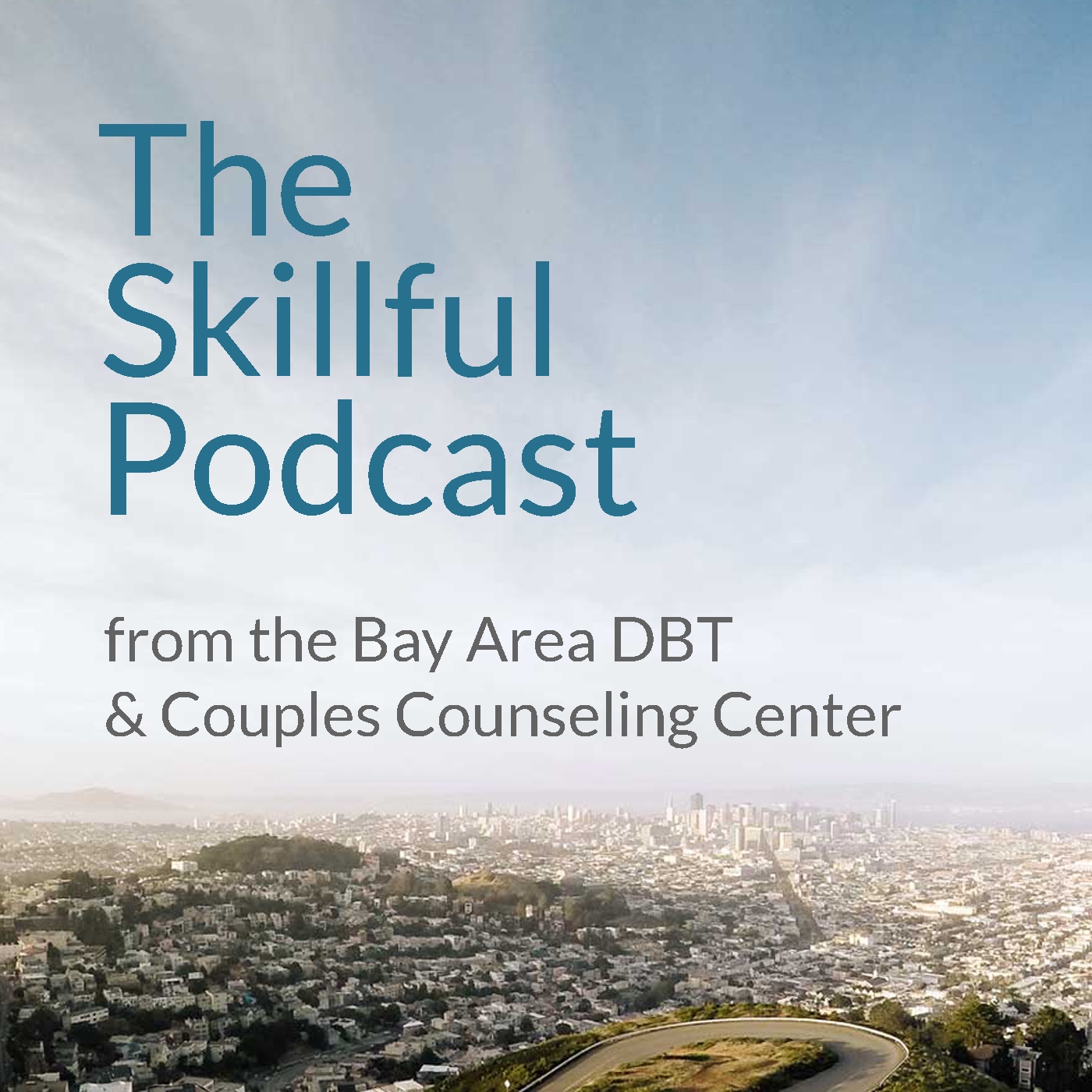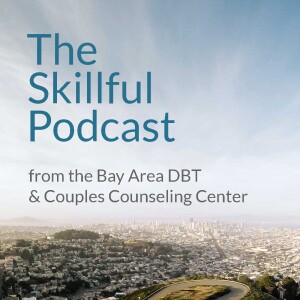
#12: Distraction & Self-Soothing to Ride out Painful Emotions
 2019-09-04
2019-09-04
Marielle and Ed continue their conversation about Distress Tolerance focusing on Distraction and Self-Soothing. While these skills won’t solve any problems, they can be super helpful when you are caught up in painful emotions.
Distraction in DBT is broken down into separate skills that go by the acronym ACCEPTS (as in Wise Mind ACCEPTS).
Show Highlights:
- Choosing distraction is very different than unconsciously avoiding
- Sometimes it’s wise to not fully experience your emotions
- These skills can be used when you have a strong urge to fix a problem immediately
- You can also use these skills when you feel an urge to engage in a behavior you are trying to stop
- A - Activities
- C - Contributing
- C - Comparisons
- E - Emotions
- P - Pushing Away
- T - Thoughts
- S - Sensations
- Different activities redirect your attention to something else - away from the painful emotion
- Figuring out what activities hold your attention when you’re upset
- Contributing can have a secondary benefit of creating a sense of purpose or meaning in your life.
- Comparing our pain to others can put our pain in perspective
- Comparing your current situation to other hard times in your life can help you feel like you can get through
- To use emotions to distract, first figure out what you are feeling and then do something that evokes a different emotion
- Pushing away is shutting out or blocking your painful emotion
- Self-Soothing with your five senses: sight, sound, taste, touch and smell
Resources:
DBT Skills Training Handouts and Worksheets, Second Edition
SUDs (Subjective Units of Distress) Scale
Ask Us a Question!We’d love to hear from you! Where are you getting stuck with your skills application? Ask us a question for the chance to have it answered on the podcast. Submit your question here.
Please note that questions, and this podcast in general, are not a substitute for individual mental health treatment.
More Episodes
 2021-07-15
2021-07-15
 2021-06-04
2021-06-04
 2021-05-20
2021-05-20
 2021-05-06
2021-05-06
 2021-04-21
2021-04-21
 2021-03-31
2021-03-31
 2021-03-17
2021-03-17
 2020-12-16
2020-12-16
 2020-10-28
2020-10-28
 2020-10-14
2020-10-14
 2020-08-06
2020-08-06
 2020-07-16
2020-07-16
 2020-06-30
2020-06-30
 2020-06-02
2020-06-02
 2020-05-19
2020-05-19
 2020-04-07
2020-04-07
 2020-03-26
2020-03-26
 2020-03-04
2020-03-04
 2020-02-27
2020-02-27
Create your
podcast in
minutes
- Full-featured podcast site
- Unlimited storage and bandwidth
- Comprehensive podcast stats
- Distribute to Apple Podcasts, Spotify, and more
- Make money with your podcast
It is Free
- Privacy Policy
- Cookie Policy
- Terms of Use
- Consent Preferences
- Copyright © 2015-2024 Podbean.com





